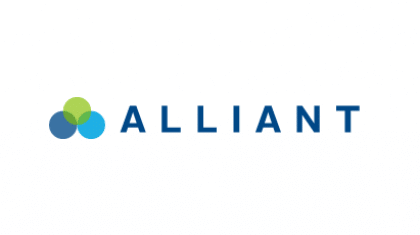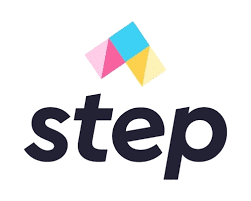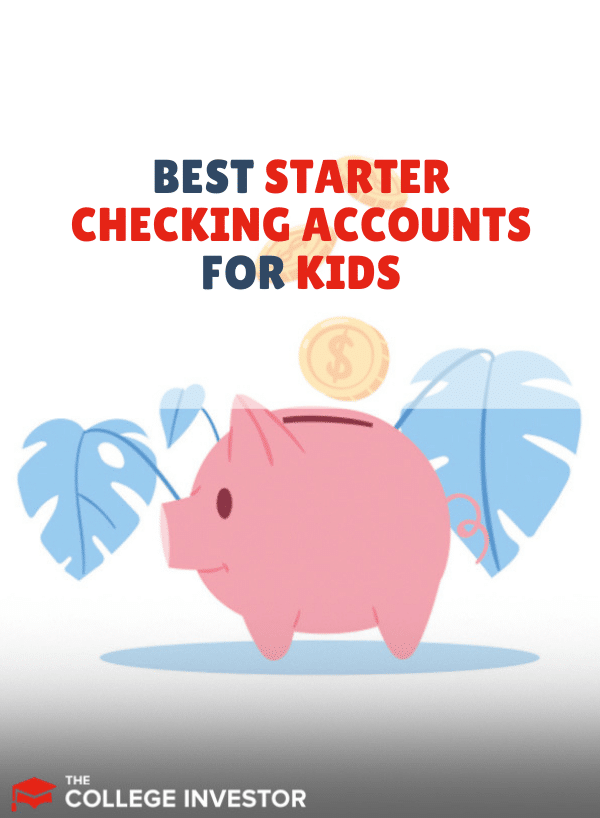
Teaching your children financial responsibility early on can help them experience financial stability later in life. They’ll have a better understanding of how to efficiently use money and avoid debt. One way to get them starting down a financially responsible path is through hands-on learning.
By opening a joint checking account with your child, you can allow them to save and spend money (with some guardrails) while you monitor their spending habits. In this way, you can both work together to build his or her financial IQ. In this article, we’ll go over three of the best starter checking accounts for kids available today.
Our Picks Of The Best Starter Checking Accounts For Kids
We evaluate checking accounts for kids based on their fees, parental control options, minimum balance requirements, annual percentage rate (the interest you receive), and branches and ATMs available.
Note: Some or all of the checking offers that appear on this site are from companies from which The College Investor receives compensation. This compensation may impact how and where products appear on this site (including, for example, the order in which they appear). The College Investor does not include all banking companies or all checking account offers available in the marketplace.
1. MPH Bank First Student Checking
MPH bank is one of our favorite banks for a variety of reasons (they offer an amazing money market account to earn interest on your savings, and they have a great free checking account for adults). However, they also offer a great starter checking account for kids and teens to get started managing their money - all with their parents help!
Highlights
- For ages 10-24 years old.
- No monthly maintenance fees.
- No overdraft or non-sufficient funds fees.
- 55,000 fee-free ATMs
Read our full MPH Bank review here.
2. Copper
Copper is a banking app that helps teach teens about financial literacy. Many banks don’t have accounts oriented towards teens. With parental oversight, Copper lets teens spend via an included Mastercard debit card. And parents are able to track and monitor their teens’ spending.
Highlights
- For ages 13-17 years old.
- No monthly maintenance fees.
- No overdraft or non-sufficient funds fees.
- Daily transaction limits ($2,500 debit).
Mobile Banking
Copper offers all of the mobile banking features you’ve come to expect from modern financial institutions. It's app-based, has a debit card, and connects to Apple Pay, Venmo, and more.
Copper makes it easy to send money back and forth between teens and parents. If parents want to send money for an allowance, everything can be done digitally. Given the digital nature of our economy, this makes complete sense.
Read our full Copper banking review here.
3. Axos First Checking
Axos First Checking is one of the best starter checking accounts for kids for multiple reasons. First, it is set up as a joint checking account so that parents have equal access and control. There are no maintenance fees or non-sufficient fund fees. And account holders receive up to $12.00 in domestic ATM fee reimbursements per month.
Highlights
- For ages 13-17 years old.
- Earn 0.25% APY.
- Up to $12 domestic ATM fee reimbursements per month.
- No monthly maintenance fees.
- No overdraft or non-sufficient funds fees.
- Daily transaction limits ($100 cash, $500 debit).
Mobile Banking
Axos offers all of the mobile banking features you’ve come to expect from modern financial institutions. Axos has a mobile app for both iOS and Android. You can deposit checks, manage your account, and use bill pay all from your mobile phone.
If you’re looking to switch from another bank, Axos has a simple, step-by-step “No-Hassle Switch Kit” to help you complete the process.
Security
Axos offers plenty of built-in security. They regularly scan for viruses and malicious software using anti-virus and malware protection software.
To ensure it is you logging into the account, a two-step authentication scheme is used. The scheme works by having you answer a few questions that only you should know the answers to. If that fails or you need another way to access your account, a security code can be sent to one of your registered devices.
Axos also uses 128-bit SSL on its website, which encrypts your information and keeps it private. Additionally, all customer accounts are regularly monitored for potential fraud.
Another feature Axos uses is automatic logout. If your session becomes inactive, you will be automatically logged out. This prevents unauthorized data collection or misuse of your accounts.
Read our complete Axos Bank review here.

4. Step
Step is a banking app that is meant to help teens transition into real money management. It allows parents to view spending activity on their teen’s app (via the parent account) and even send money to their teen.
Many kids and parents are seeing Step for the first time due to promotion and popularity by TikTok and social media stars. Regardless, it's still a great starter checking account.
Highlights
- For ages 13-17 years old, you can open a "lite" account with a parent or guardian.
- If you're 18 or older, you can open an account on your own.
- Step helps build credit by acting like a secured credit card based on your balance.
- Step connects to Apple Pay and Google Pay
- No ATM access.
Mobile Banking
Step provides debit card functionality for teens but other checking features are not present. For example, the only way to move money into your Step account is from another bank account via a debit card or by linking to a Cash App, Venmo, or PayPal account. Linking a debit card provides immediate money transfers. Going through CashApp, Venmo, or PayPal will take 1-3 business days.
There is no mobile check deposit or cash deposit. Paper checks don’t come with the account either. You can, however, easily make direct deposits from an employer. Just give the employer your account and routing numbers, which are the same for a regular checking account.
Read our full Step review here.
5. Chase High School Checking
Like Axos, Chase High School Checking is a joint account and the co-owner must have a linked Chase account. There is no monthly service fee with this account. Once the account holder turns 19, their Chase High School Checking account will convert to a Chase Total Checking® account.
While the lack of fees is what landed Chase High School Checking on our list of best starter checking accounts for kids, it unfortunately doesn't earn interest. However, you’ll be hard-pressed to find similar accounts for minors that do earn any meaningful interest.
The main reason for choosing Chase is the convenience of being with a major full-service bank. Chase has a network of 16,000 ATMs and nearly 5,000 branches.
Highlights
- For ages 13-17 years old.
- Account co-owner is able to view how their child is using money in the account through the Chase Mobile App.
- QuickPay® with Zelle available.
- Set up different types of alerts, including balance/spending alerts, security alerts, and/or payment alerts.
Mobile Banking
The Chase mobile app has everything you’d expect from a major financial institution, including fingerprint/facial scan authentication and the ability to lock your card. You can also send and receive money with Zelle, deposit checks by snapping a photo, and much more.
Security
Chase uses 128-bit encryption technology on its website and mobile app to protect your username, password and other personal account information.
Another strong security measure that Chase takes is that it requires multiple authentication every time it recognizes a new device is trying to log in to your account.
So even if your username and password were stolen by identity thieves, they would not be able to log into your account on an unrecognized device unless they also had access to your email account or were in physical possession of your phone.
Read our full Chase Bank review here.

6. Alliant Teen Checking
By now, you might be starting to see a pattern with these accounts. Usually, the age group is 13 - 17 years old and must be a joint account. That is no different with the teen checking account offered by Alliant Credit Union.
However, unlike the Chase High School Checking account, the Alliant Teen Checking account does earn 0.25% APY in interest. Unfortunately, it also has a few fees you'll want to be aware of:
- Inactivity Fee — $10.
- Stop payments (checks and ACH) that are submitted in writing or verbally — $25. Any Stop payments (checks) submitted via Alliant Online Banking or Phone Banking are free.
- ACH initiated via Telephone (per occurrence) — $10.
Thankfully, none of these fees are monthly or mandatory and should be fairly easy to avoid. Alliant also has an extensive ATM network. Customers get access to 80,000+ fee-free ATMs.
Highlights
- For ages 13 - 17 years old.
- Earn 0.25% APY.
- $20 in service fee rebates for out-of-network ATMs.
- No monthly maintenance fees.
- No minimum monthly balance.
- Contactless Visa® debit card — for both owners of the account.
- Smart limits & parental monitoring.
One reason that Alliant Teen Checking makes our list of best starter checking accounts for kids is that it includes a software-based budgeting assistant or personal finance manager.
The budgeting assistant helps your teen see where their money is going. Is it fast food that they are spending the most on or clothes? By looking through their budgeting assistant, your child can then adjust their spending.
Related: The Most Popular Budgeting Apps And Spending Trackers
Mobile Banking
Alliant’s mobile app is fully-featured and available on both iOS and Android. It allows your teen to budget, manage their account, and even use their debit card without needing the physical card on hand.
Security
As would be expected, Alliant uses bank-grade encryption on both its website and apps. Additionally, your child's account will be covered by Visa’s $0 fraud liability feature. This extra protection means that your teen will never be responsible to pay for fraudulent debit card charges.

Final Thoughts
Starter checking accounts for kids allow young people to manage money as they like with some parental supervision. It’s a great way to learn good money habits before jumping into the real thing.
But you'll want to make sure that the account doesn't allow overdrafts or that you opt out of this "protection." Overdrafts can not only lead to expensive fees but could also cause negative marks to be added to your child's banking report. And that could make it more difficult for them to open a student checking account on their own in the future.
Not sure that you're ready to open a checking account for your child? Getting a prepaid debit card that you load a certain amount of money onto each week or month could be a worthy alternative. With prepaid cards, teens still get the opportuntity to learn about money management -- but without the risk of overdrafting. These are our favorite prepaid cards for teens.
Methodology
The College Investor is dedicated to helping you make informed decisions around complex financial topics like finding the best checking account. We do this by providing unbiased reviews of the top banks and checking accounts for our readers, and then we aggregate those choices into this list.
We have picked checking accounts based on our opinions of how easy they are to use, their costs and fees, any interest rates and bonuses provided, and a variety of other factors. We believe that our list accurately reflects the best free checking accounts in the marketplace for consumers.

Robert Farrington is America’s Millennial Money Expert® and America’s Student Loan Debt Expert™, and the founder of The College Investor, a personal finance site dedicated to helping millennials escape student loan debt to start investing and building wealth for the future. You can learn more about him on the About Page or on his personal site RobertFarrington.com.
He regularly writes about investing, student loan debt, and general personal finance topics geared toward anyone wanting to earn more, get out of debt, and start building wealth for the future.
He has been quoted in major publications, including the New York Times, Wall Street Journal, Washington Post, ABC, NBC, Today, and more. He is also a regular contributor to Forbes.
Editor: Clint Proctor Reviewed by: Chris Muller



